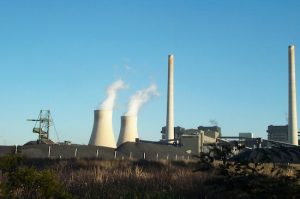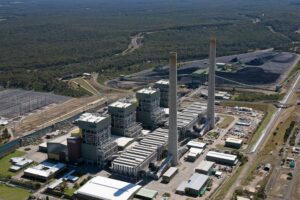Coal fired power plants are still one of the biggest contributors to air pollution in Australia, despite recent closures, outages and breakdowns, a new study has found.
The analysis by Environmental Justice Australia is the latest in the wake of dozens of studies showing the damage that fossil fuels generally, and coal power plants specifically, are wreaking on human health.
In 2021-22, coal power plants produced 7 per cent and 5 per cent less electricity in New South Wales (NSW) and Victoria respectively, but air pollution actually increased, according to data crunched from the National Pollution Inventory (NPI).
“Coal-burning power stations are among the biggest polluters in Australia, causing serious health impacts in the community, including increasing rates of asthma in children, contributing to low birth weight in newborns and the development of serious heart and lung conditions,” says Environmental Justice Australia senior campaigner Joy Toose.
“The technology to reduce this pollution exists and is used widely around the world, but shockingly, coal-fired power stations in Australia continue to operate without best-practice controls, exposing millions of Australians to unnecessary levels of toxic air pollution.”
Less power, more pollution
In Victoria, mercury emissions rose by 12 per cent year-on-year, with AGL’s Loy Yang B being the worst offender. Fine particle pollution is also up, with the volume of PM2.5 released or particles in smoke with a diameter of 2.5 micrometres, rising by 10 per cent, and PM10 rising by 11 per cent.
The data comes from the first full year to include the Environment Protection Authority (EPA) announced new licence conditions for Victoria’s three remaining coal power plants as well, which added limits on mercury and particulate pollution for the first time.
The rise in air pollution is indicative of the laxity of these new limits, Toose says.
In NSW, all five coal power plants reported increased mercury levels, which rose by 18 per cent, while PM2.5 pollution is up 7 per cent.
Nitrogen oxide, a particularly nasty organic compound, touched 2.23kg per megawatt, compared to 1.3kg in Victoria. Vales Point Power Station was the biggest culprit and has since received another exemption from NSW’s EPA to continue polluting above its licence limits for nitrogen oxide.
Mount Piper Power Station near Lithgow say power production drop by 32 per cent, and yet PM2.5 pollution rose by 147 per cent, PM10 by 78 per cent, and mercury by 59 per cent.
But Queensland has the biggest polluters: Stanwell, Millmerran and Tarong power stations are among the top 10 sulphur dioxide polluters in the country of more than 2000 reporting entities.
Tarong also tops the list for PM2.5 pollution, and it joins Stanwell, Gladstone and Callide in the top 10 of nitrogen oxide polluters. These four are also in the top 20 of mercury polluters, with Millmerran Power coming in at number eight.
Coal power plants are one of two sources of controllable mercury emissions, the other being metals production, according to a paper looking at emissions between 2000 and 2019.
“Within the coal-fired power plant sector, we find that emissions from black and brown coal-fired power plants were roughly equivalent from 2000 to 2016. Following the 2017 closure of Hazelwood… black coal-fired power plants now account for roughly 60 per cent of sectoral emissions,” wrote the authors of Two decades of changing anthropogenic mercury emissions in Australia: inventory development, trends, and atmospheric implications.

Air quality on the radar
Air pollution is beginning to get air time.
Last week a Clean Air Forum hosted by Labor MP Dr Michelle Ananda-Rajah saw chief health officer professor Paul Kelly saying he’d asked a subcommittee of the Australian Health Protection Principal Committee to make indoor air quality a key priority for the next 12 months.
Last year, a stern warning from 99 experts in The Lancet medical journal said fossil fuels are exacerbating the health effects of climate change — although globally deaths from coal burning are down 18 per cent between 2015 and 2020.
Studies have long shown the kinds of dire consequences of air pollution caused by coal power plant pollution. Minimal exposure to PM2.5 particles may increase the risk of lung cancer as well as other heart and lung conditions, as do sulphur and nitrogen oxides, while mercury causes impaired cognition and developmental delays in babies.
A report by Greenpeace in 2020 suggested that 800 people die prematurely in Australia every year due to illnesses caused by coal power plants.
“We know that coal fired power stations are a major contributor to the air pollution that causes a significant health burden to the people of NSW, including 603 early deaths a year,” Lake Macquarie GP Kathleen Wild said.
“While many are aware of how air pollution contributes to lung problems like asthma and emphysema, there is increasing evidence that it also contributes to your risk of heart disease, dementia, low baby birth weight, and several other diseases.
“This is why there are limits on nitrogen oxide and sulphur dioxide chemicals that pollute the air from coal power stations, and it is a health concern to the Lake Macquarie and Central Coast communities that exemptions have been granted to Vales Point Power Station to exceed limits on air pollution.”
Air quality commitments
Victoria released its Air Quality Strategy in October 2022, but Voices of the Valley spokesperson Wendy Farmer says the Latrobe Valley, where the state’s remaining coal power stations are, has been excluded from the plan.
“Our community has powered Victoria for decades and shoulders a huge health burden from breathing toxic air as a result, but we’ve been shut out of the government’s clean air plan,” she says.
“If the government’s clean air plan is truly for all Victorians, the Latrobe Valley should be included, alongside the priority areas identified in Melbourne’s West.”
While the plan does not specifically outline an exit from coal power, it does highlight the state’s renewable energy capacity goals and incentives to move towards clean energy sources.
NSW also has an air quality strategy for 2021-2030, which explicitly talks about a requirement to improve “air impacts” from coal power and committed some of a $2 billion air quality fund to “coal innovation”. It also outlined the state’s exit from coal power over the coming two decades.










